Five Horses Scroll”(五马图卷)
By Li Gonglin (李公麟, 1049–1106), Northern Song Dynasty
Held by Tokyo National Museum
Overview
This iconic handscroll, painted in ink on paper by Li Gonglin (also known as Li Longmian), depicts five prized Central Asian steeds gifted to the Song imperial court. Each horse—Fengtou Cong (凤头骢), Jinbo Cong (锦膊骢), Haotou Chi (好头赤), Zhaoye Bai (照夜白), and Manchuan Hua (满川花)—is accompanied by a groom, showcasing Li’s mastery of baimiao (白描, “plain-line”) technique. The scroll bears inscriptions by Huang Tingjian (黄庭坚) and Zeng Yu (曾纡), including a legendary anecdote about Li “painting a horse to death.” Though long believed lost, it resurfaced in 2019 at Tokyo National Museum’s Yan Zhenqing exhibition, ending a century of mystery.
Key Features
- The Horses & Their Origins
- Fengtou Cong: From Khotan (于阗), dappled chestnut with a phoenix-like head (五尺四寸 tall).
- Jinbo Cong: Gifted by Tibetan leader Dong Zhan (董毡), golden-maned with striped legs.
- Haotou Chi: Fiery-red coat; groom scrubs its back, capturing a candid moment.
- Zhaoye Bai: Snow-white, named after Tang Emperor Xuanzong’s legendary steed.
- Manchuan Hua: Mottled gray (likely added in Yuan Dynasty; differs stylistically).
- Artistic Significance
- Baimiao Technique: Li’s minimalist ink lines convey muscle tension and silk-like coats without color.
- Hybrid Realism: Persian and Turkic grooms reflect Song China’s multicultural exchanges.
- Controversy: The fifth horse and some inscriptions are later additions (Yuan or Ming periods).
- Legendary Anecdote
Zeng Yu’s colophon recounts how Li’s vivid portrayal of Manchuan Hua “drained its spirit,” causing the horse’s death—a tale emphasizing the artist’s supernatural skill.
Provenance & Historical Journey
- Song to Qing: Imperial collections → Scholar-officials (e.g., Ke Jiusi 柯九思) → Qing palace.
- Modern Era: Taken by Puyi from the Forbidden City (early 1900s), then vanished until 2019.
- Colophons:
- Huang Tingjian praises Li’s rejection of officialdom for art.
- Qianlong Emperor composed three poems, musing on the horses’ symbolism of imperial power.
Why This Matters
- Cultural Diplomacy: Documents Silk Road tributary exchanges.
- Technical Legacy: Influenced Zhao Mengfu’s (赵孟頫) horse paintings.
- Market Impact: One of only three confirmed Li Gonglin originals (with Admonitions Scroll and Pasturing Horses).
Notes for Western Audiences
- Compare to Leonardo’s Horse and Rider for anatomical precision.
- “Baimiao” resembles Western silverpoint in its monochromatic elegance.
- The “painted horse dies” trope parallels Pygmalion’s myth in Ovid’s Metamorphoses.
Suggested Display Caption:
“Li Gonglin’s Five Horses Scroll merges documentary detail with lyrical brushwork, immortalizing Central Asia’s ‘living dragon’ steeds in Song China’s golden age of painting.”

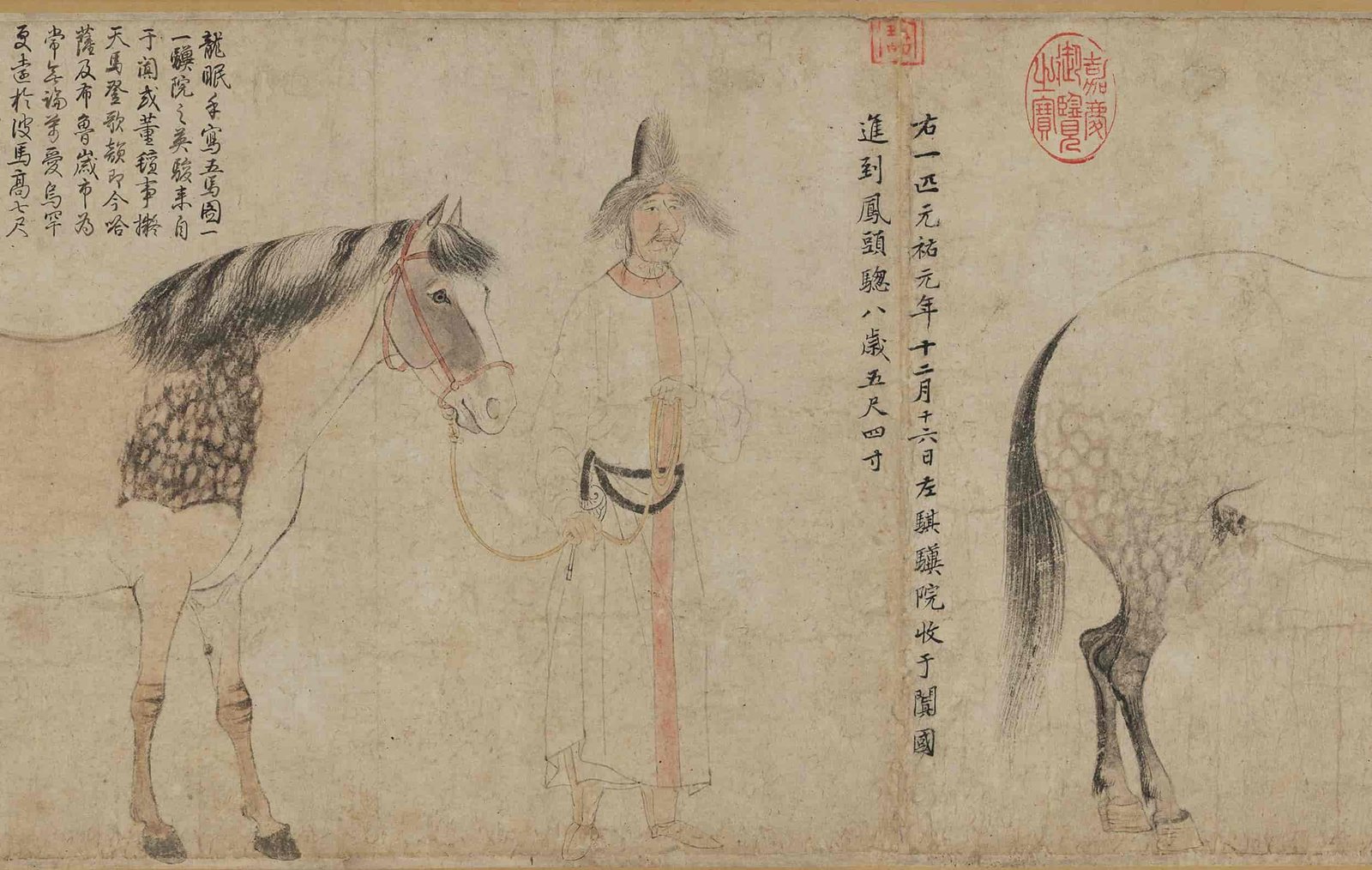
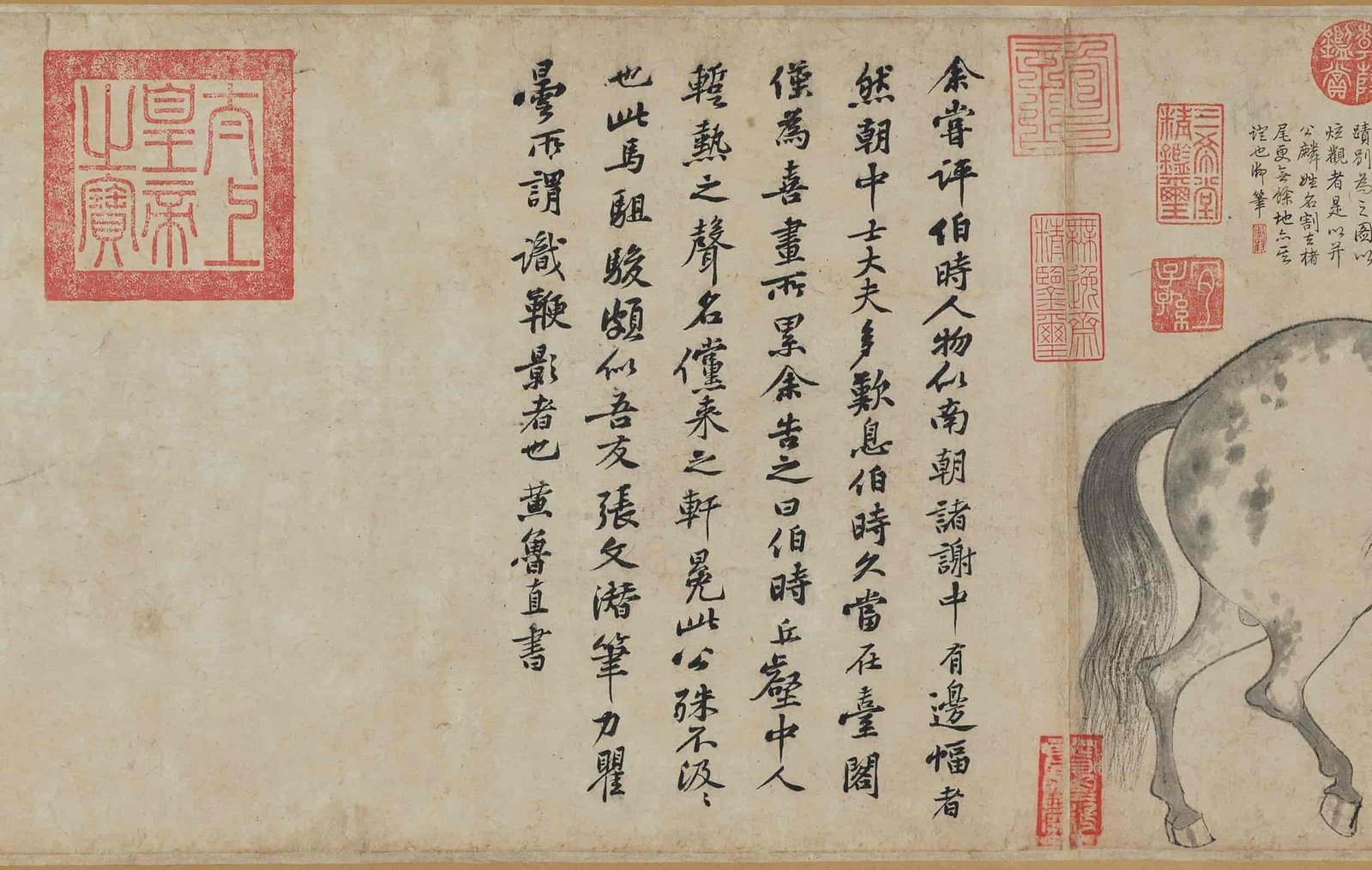
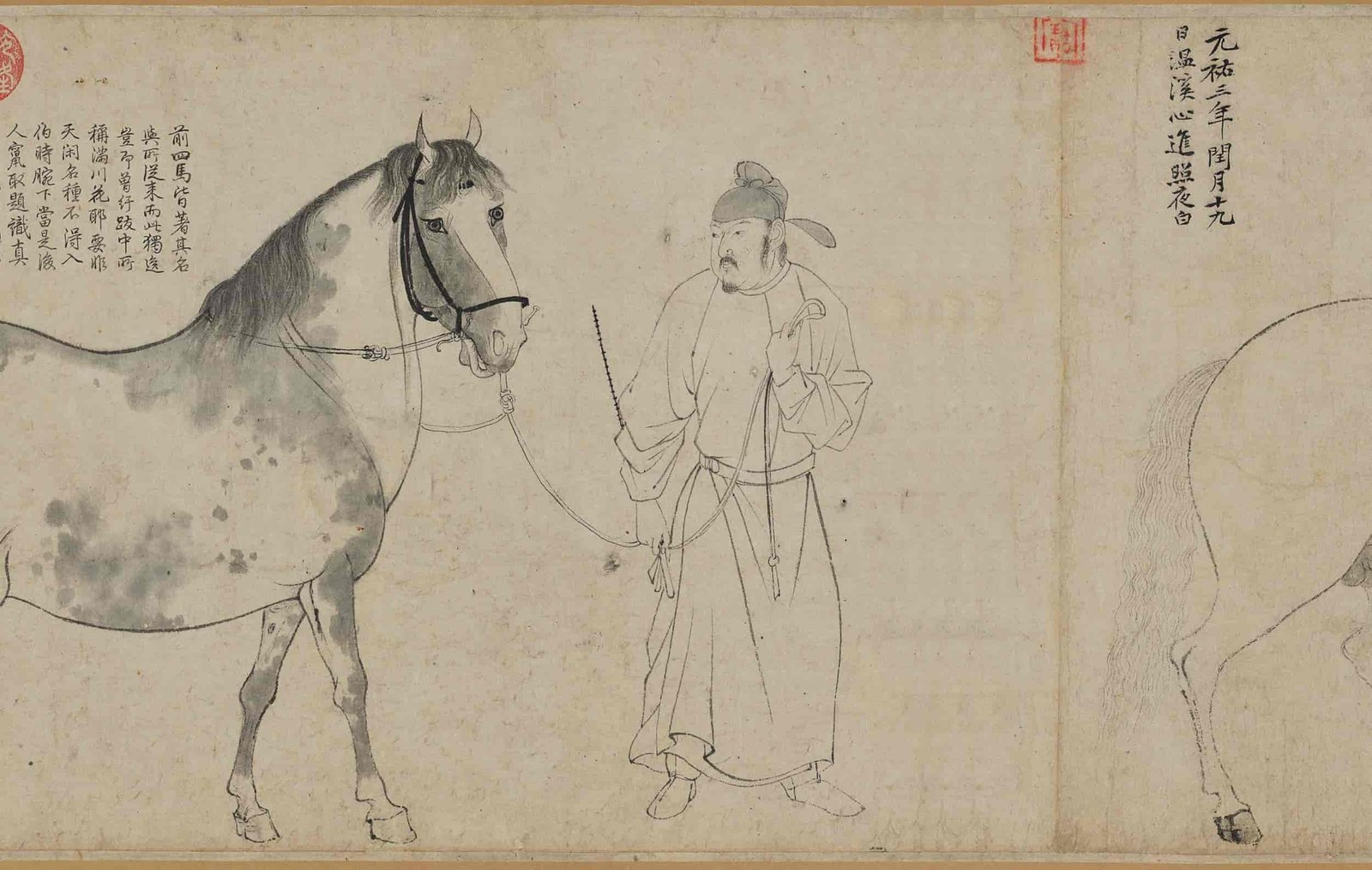
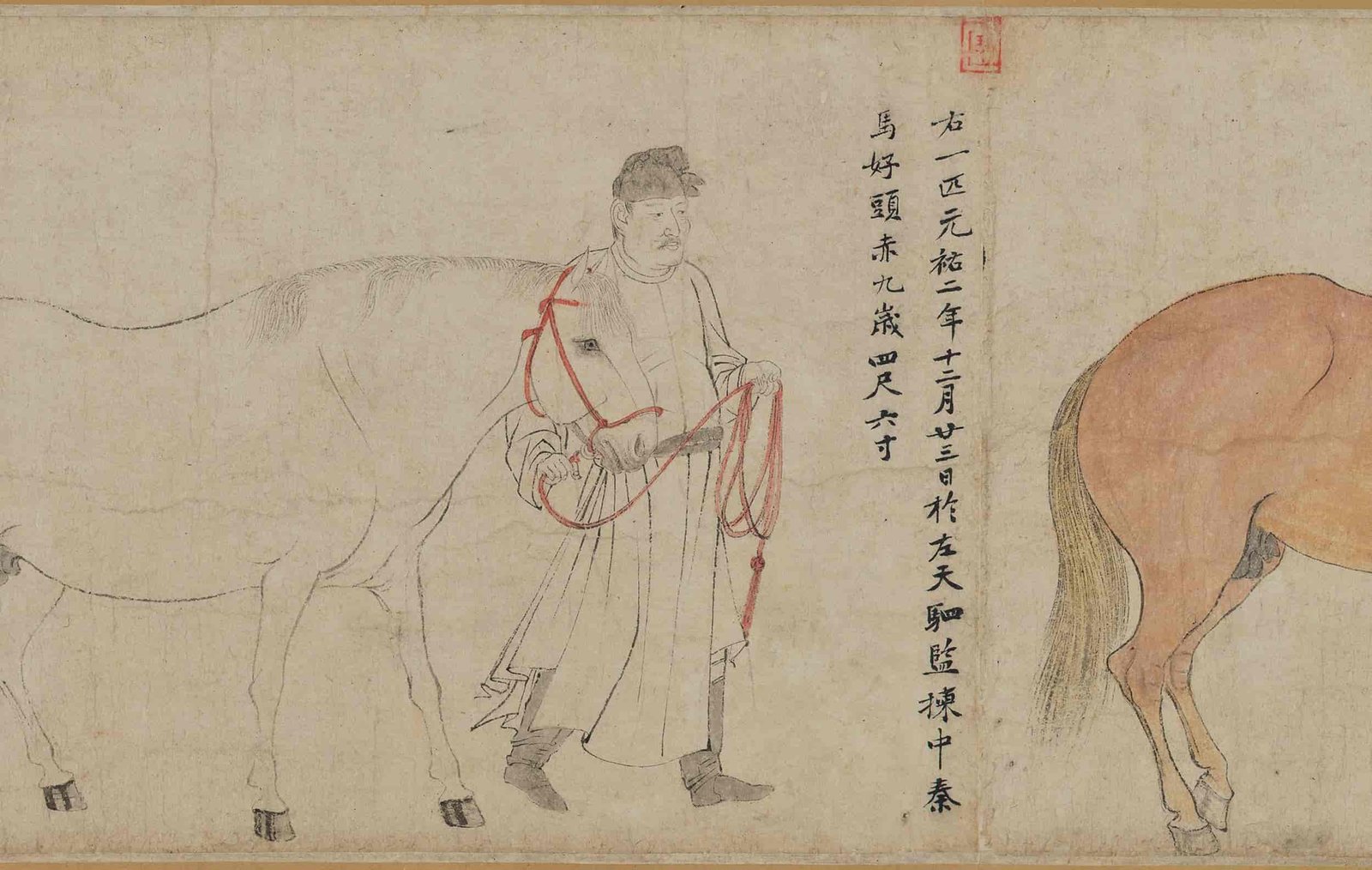
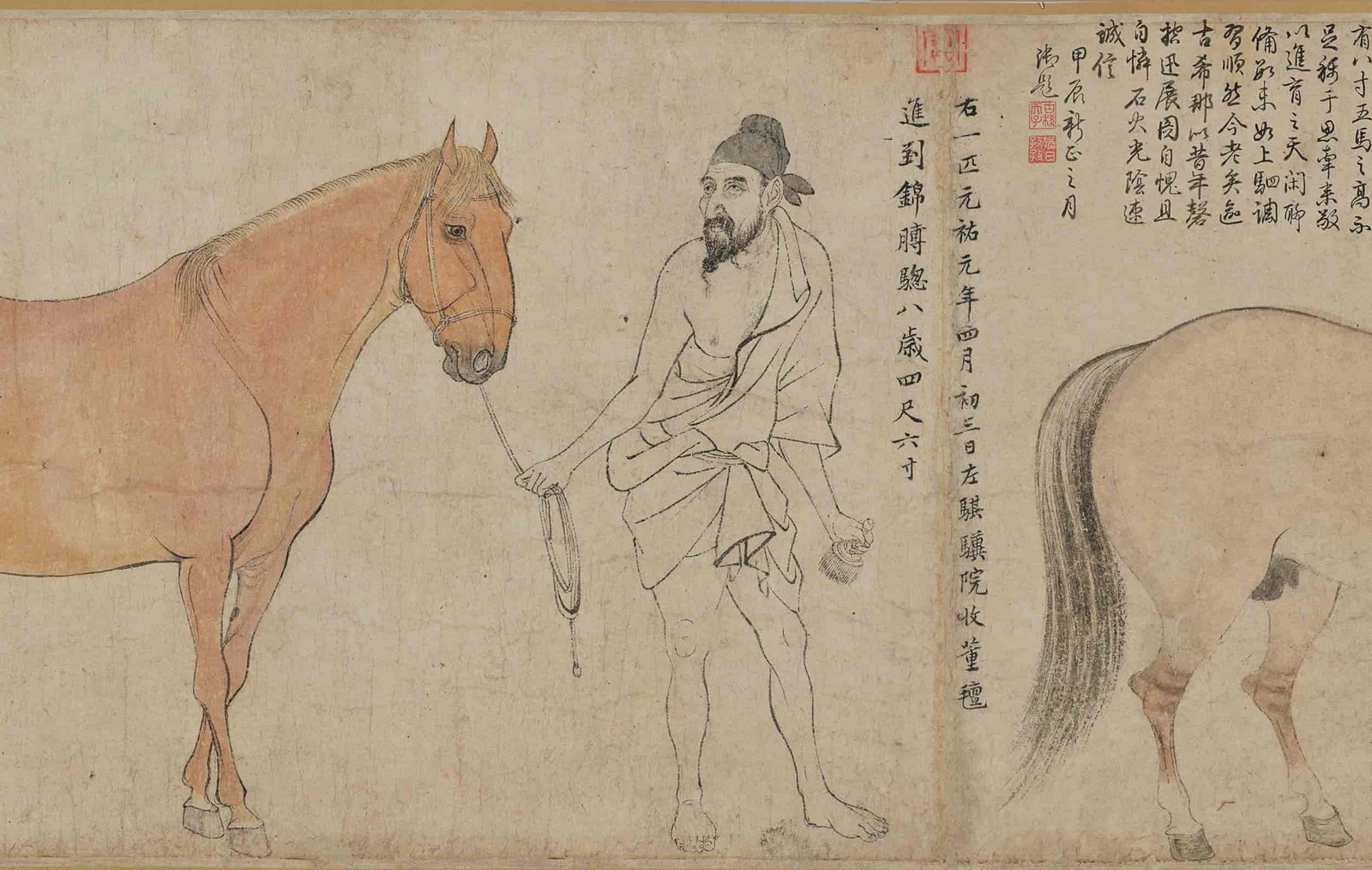
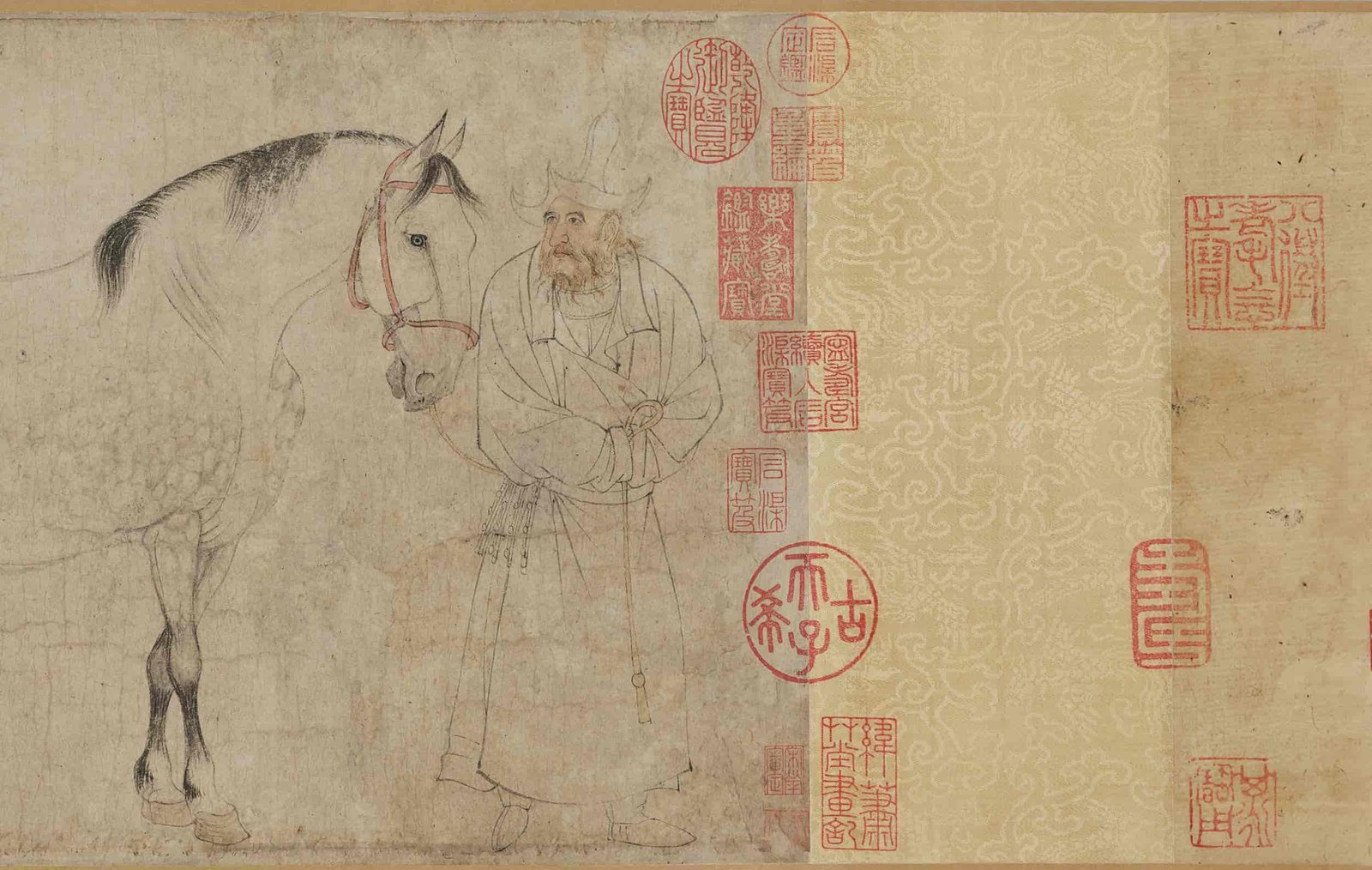
评价
目前还没有评价